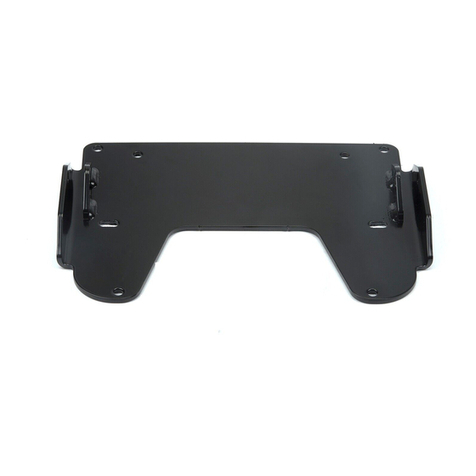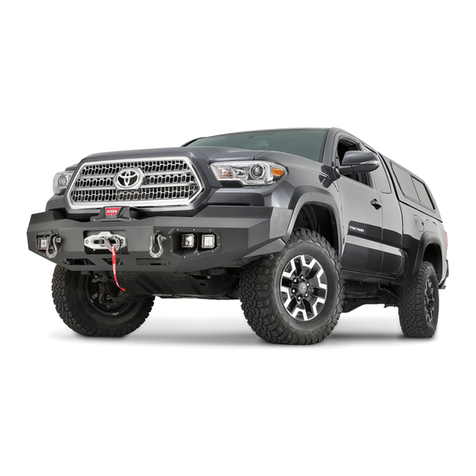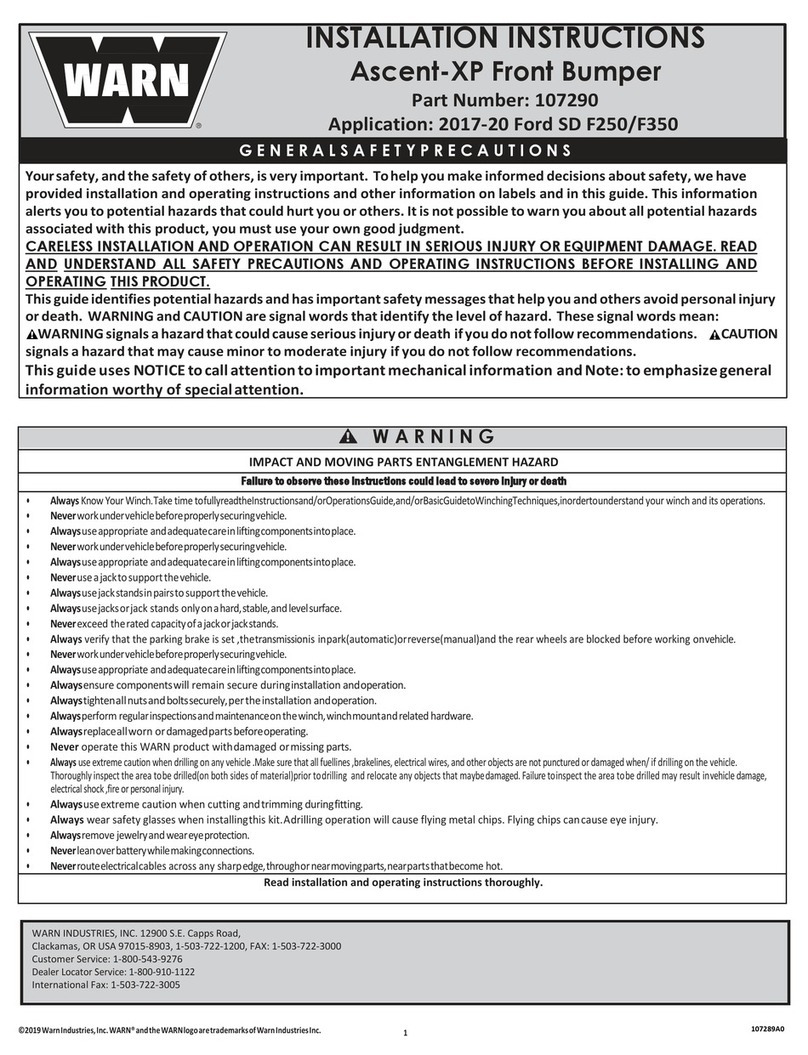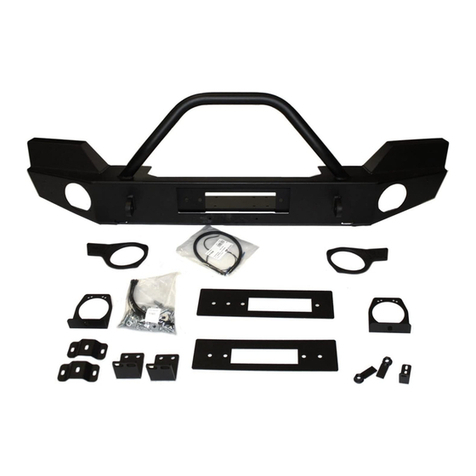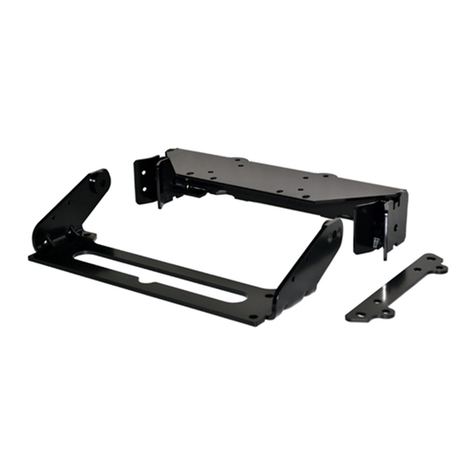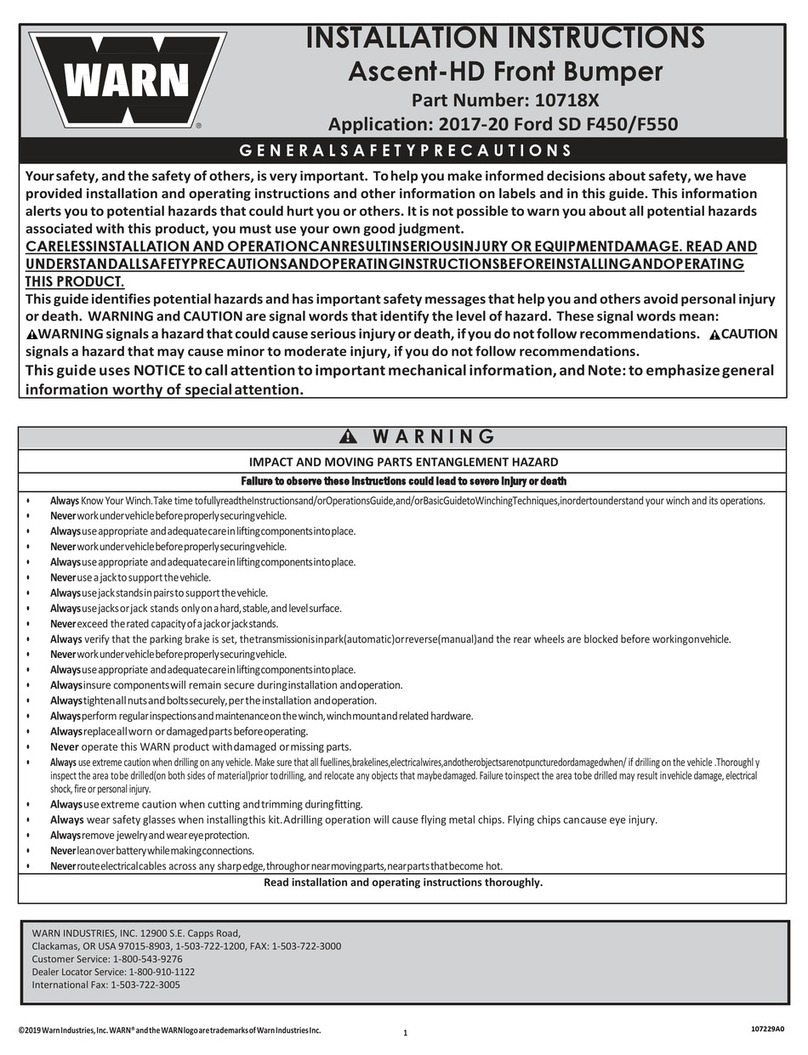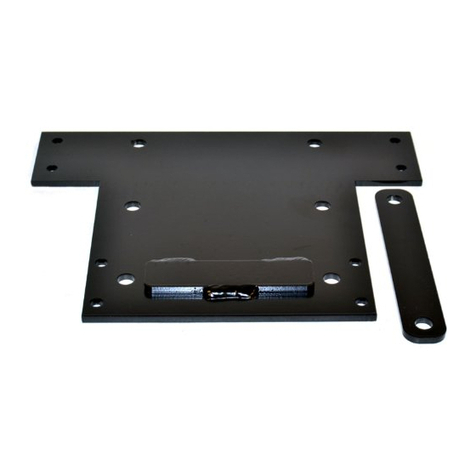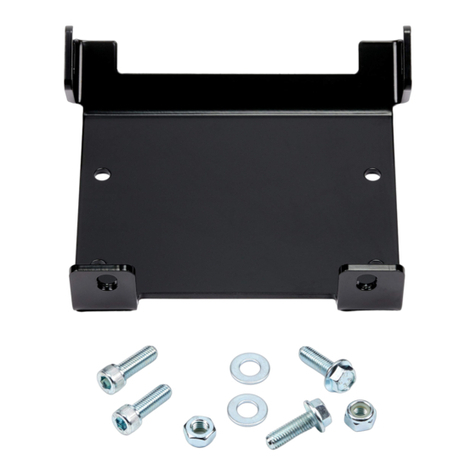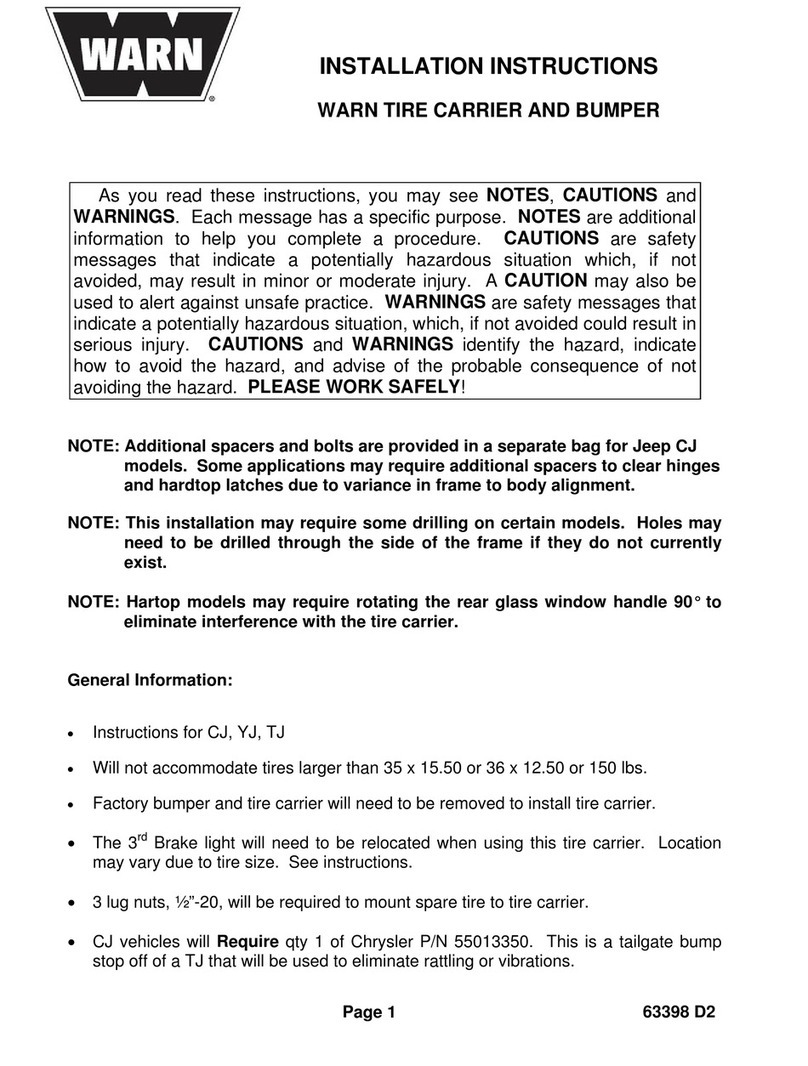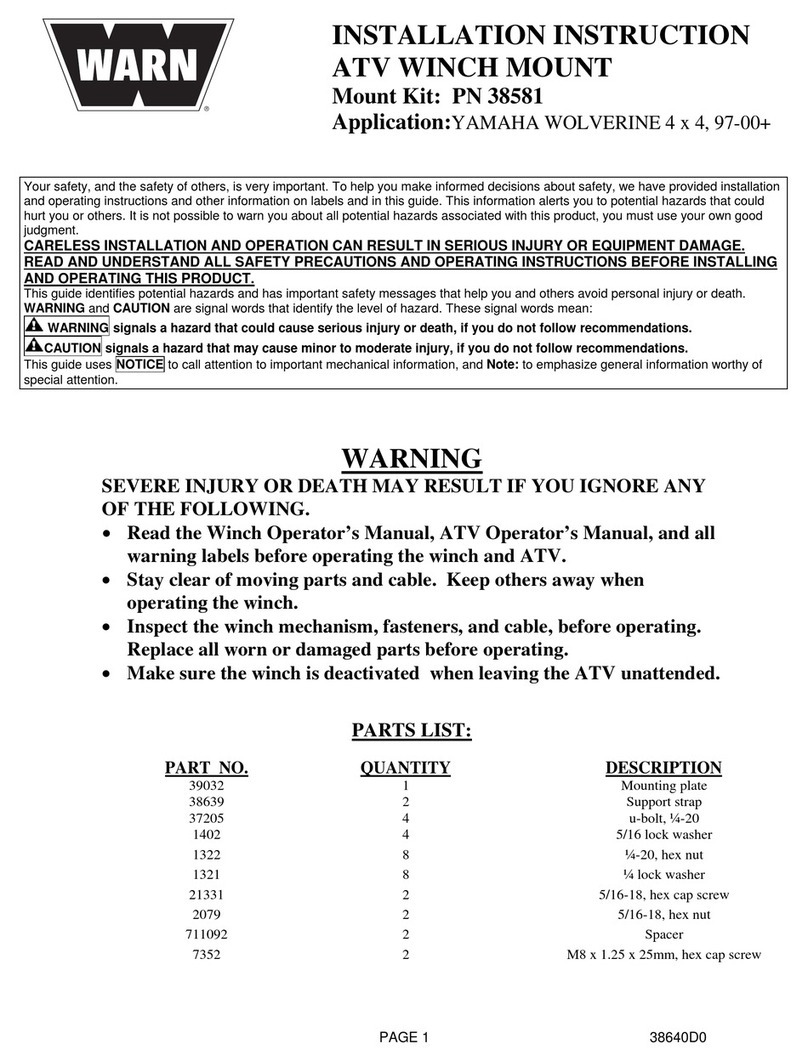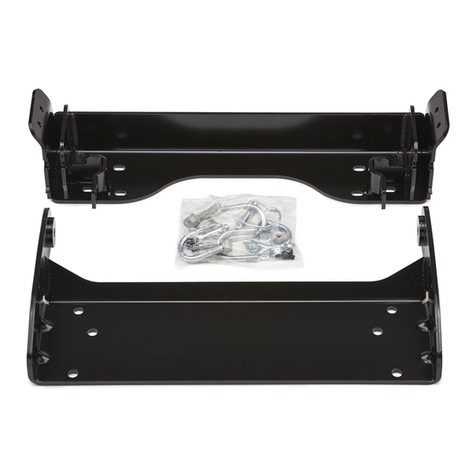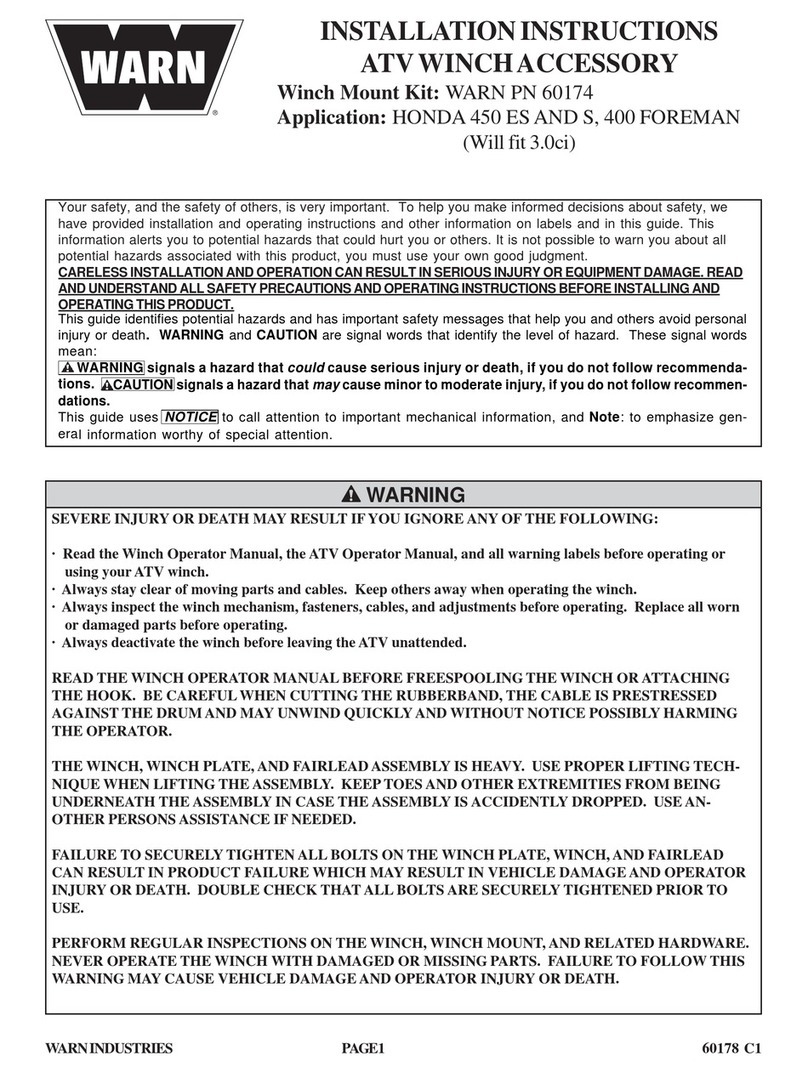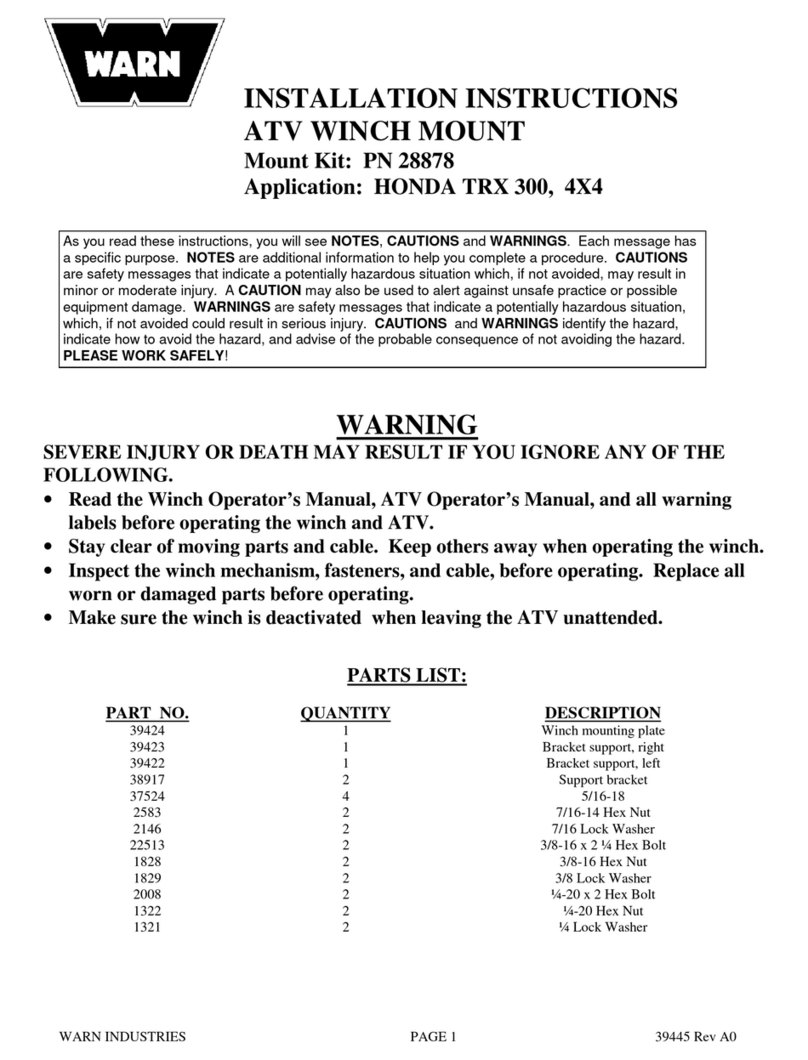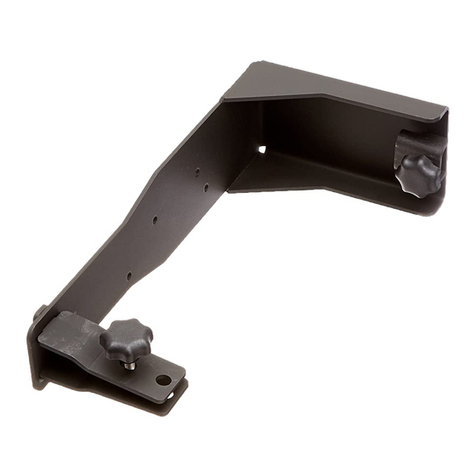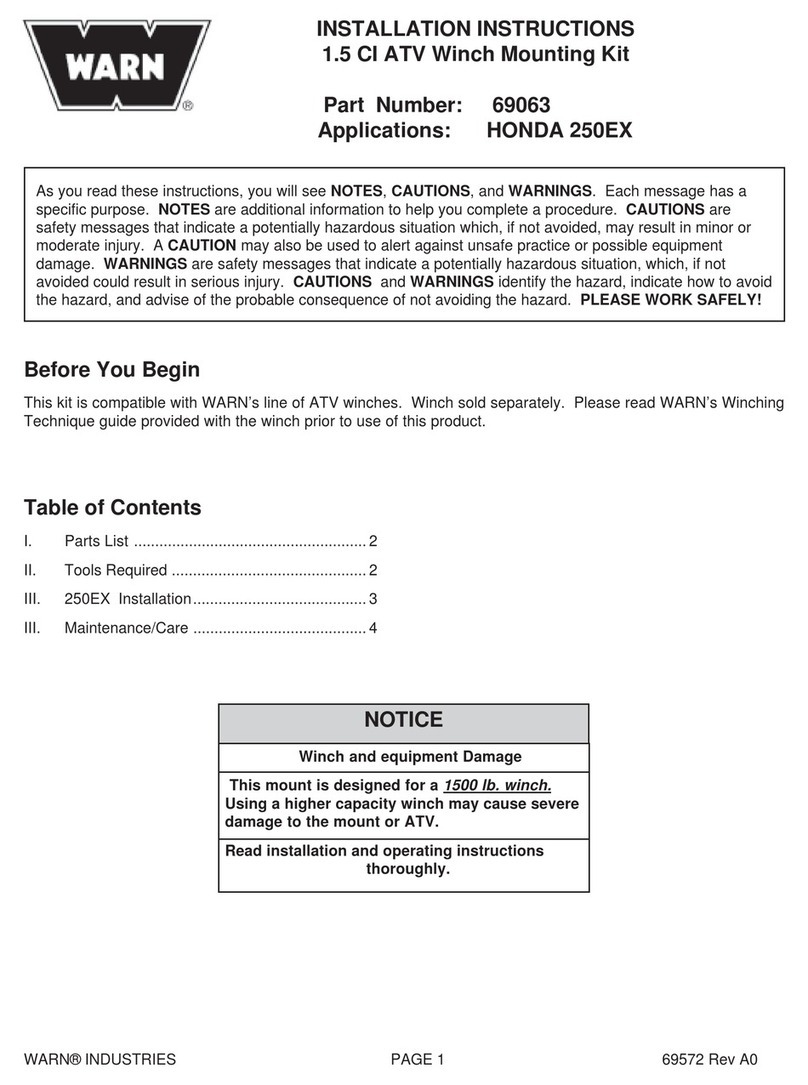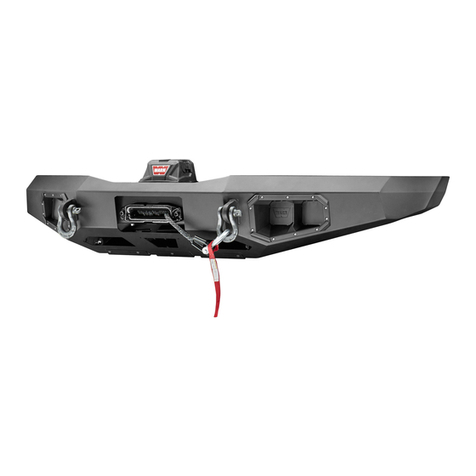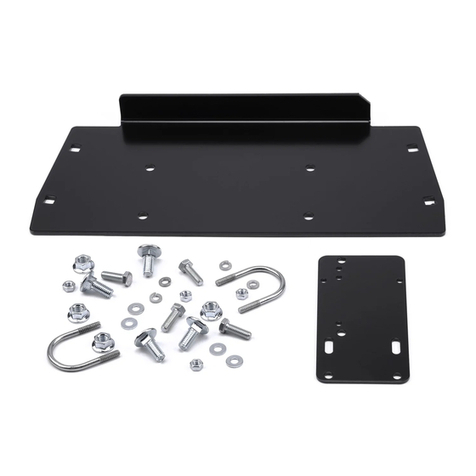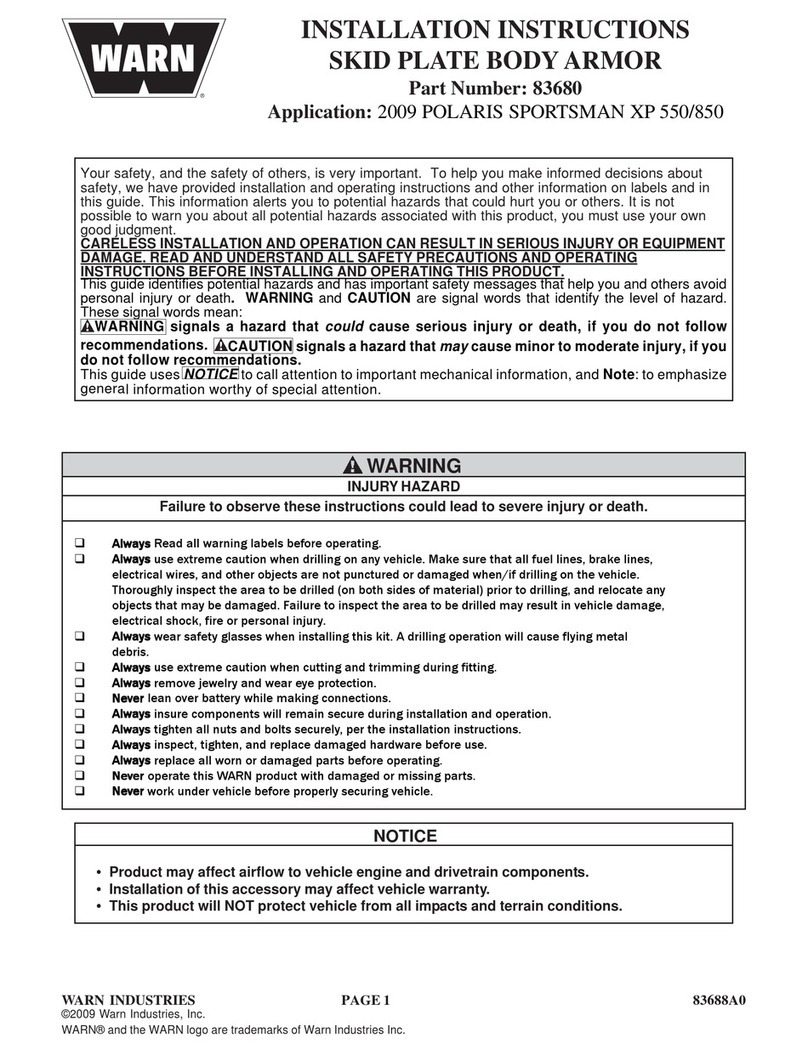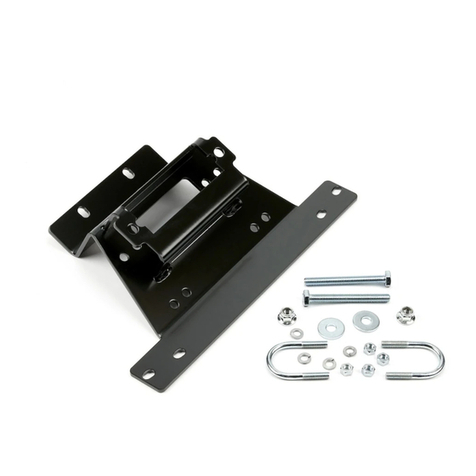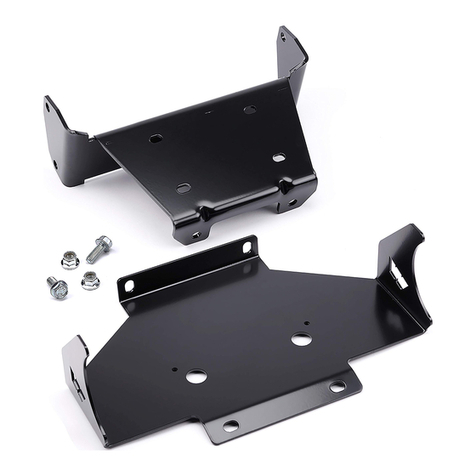
WARN INDUSTRIES * BASIC GUIDE TO PLOWING
3
GENERAL SAFETY PRECAUTIONS
MOVING PARTS ENTANGLEMENT
HAZARD
Failure to observe these instructions could
lead to severe injury or death.
• Always stay clear of moving parts and joints.
• Always keep others away when operating or
adjusting plow.
• Always perform regular inspections and
maintenance on the plow mechanism, fasteners,
rope and related hardware.
• Always replace all worn or damaged parts before
operating.
• Never operate this WARN product with damaged
or missing parts.
• Always drive slowly over bumpy and rough
terrain. Driving at speeds that cause the plow to
bounce while in the up position may cause the lift
system to back-drive, lowering the plow down.
This may result in the plow impacting a stationary
object and cause damage to the vehicle and
operator injury or death.
• Always drive at speeds such that the plow does
not bounce and be aware of the plow position
while driving at all times.
• Never raise the plow to a solid (stall/lock) position
against vehicle, as it may damage the vehicle lift
device and plow.
•Always wear a helmet and appropriate riding
gear when operating the vehicle.
• Always store the plow system in a dry place
when not in use.
• Always lower the plow to the down position
before leaving the vehicle unattended.
• Never operate the plow near bystanders.
• Never be near or contact the plow or lifting
device while the plow is being raised or
lowered.
• Always operate plow vehicle with care. Vehicle
weight balance and stability can be greatly
changed when a plow is attached and when the
vehicle is pushing a loaded plow. With this
change, steering and vehicle control will be
different.
• Always use appropriate and adequate care in
lifting components into place.
• Always insure components will remain secure
during installation and operation.
• Always tighten all nuts and bolts securely, per the
installation instructions.
WARNING WARNING
MOVING PARTS ENTANGLEMENT
HAZARD
Failure to observe these instructions could
lead to severe injury or death.
To avoid injury to hands or fingers:
•Never remove the hook from the end of the winch
rope. The hook prevents the end of the winch
rope from being pulled into the roller-fairlead.
Removal of the hook increases the chance that
fingers or other extremities may be pulled into the
roller-fairlead causing personal injury. Leave the
winch hook on and always follow safe winching
techniques as described in the Winching Guide
included with your winch.
•Never winch with the rope outside of the roller-
fairlead. Doing so can result in severe vehicle
damage and rope wear that can cause the winch
rope to break suddenly and potentially cause
destructive vehicle damage and major injury or
death to riders and bystanders. Always route the
rope through the roller-fairlead before winching.
• Always check the winch for back-driving and rope
nesting before plowing. Failure to do so may
cause the plow to creep downward when in the up
position. If the plow creeps down low enough, the
blade may hit a stationary object ejecting the rider
from the vehicle and causing serious injury or
death.
• Always check lift mechanism, straps or winch
rope integrity before plowing. Failure to do so
may cause the plow to drop suddenly from the up
position and impact a low-lying object, potentially
ejecting the rider from the vehicle and causing
serious injury or death.
• Always replace winch rope if appears worn or
frayed before plowing.
• Always be sure the latch lever handle is fully
engaged before plowing. In some instances it
may be necessary to push the handle to engage it
into the plow base. Failure to properly engage the
plow may result in loss of vehicle control which
can lead to vehicle damage, personal injury, or
even death.
• Always operate the vehicle at a low speed with
the blade installed. Never exceed 5 mph (8 km/h),
even with blade up. Use low range if vehicle is
equipped.






